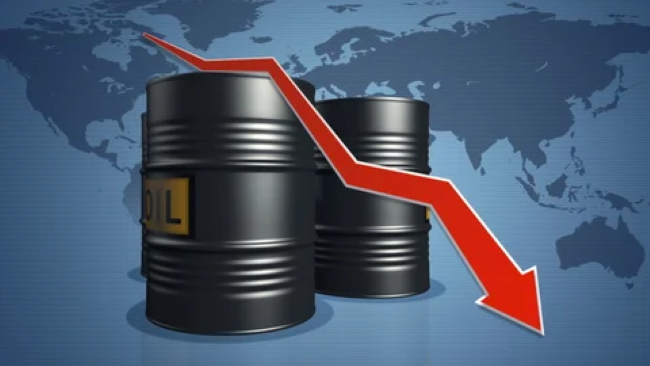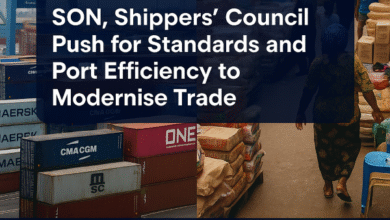Oil prices slide to $60 as OPEC+ opens the taps

In a development that underscores the fragility of current global energy dynamics, Brent crude plunged to $60.42 per barrel on Monday, its lowest since early April, as OPEC+ announced an accelerated easing of production cuts, spooking markets already grappling with faltering demand signals.
West Texas Intermediate (WTI) wasn’t spared either, tumbling by 1.58% to $57.37 per barrel, as oil traders digested the implications of rising output amid a backdrop of recession fears, trade tensions, and an oversupplied crude market.
OPEC+ REVERSES COURSE: SURPLUS SIGNALS AHEAD
The latest move by OPEC+—a loose alliance of the Organization of Petroleum Exporting Countries and allies including Russia—marks a sharp shift from its recent cautious production strategy. The cartel agreed to raise output by 411,000 barrels per day in June, bringing total increases for Q2 2025 to 960,000 bpd. This represents a 44% rollback of the 2.2 million bpd in voluntary cuts made since 2022.
Key Insight:
At this pace, OPEC+ could fully unwind its earlier cuts by October 2025, unless compliance among laggard members like Iraq and Kazakhstan improves. Behind the move lies Saudi Arabia’s frustration with non-compliant members and a strategic play to recalibrate the market, possibly at the expense of U.S. shale producers.
MARKET REACTION: OIL FUTURES STUMBLE, CONTANGO RETURNS
Oil markets responded swiftly. The Brent futures curve, a key barometer of supply-demand dynamics, flattened sharply, with the premium between front-month contracts and six-month forward delivery narrowing to just 10 cents—down from 47 cents a session prior.
For a brief moment, the curve flipped into contango, a market condition where future oil prices exceed current ones—typically signaling oversupply and weak short-term demand.
This marks the first contango since December 2023, and for analysts and traders alike, it is a red flag.
THE ECONOMICS OF EXCESS: GLOBAL STOCKS SWELL BY 150 MILLION BARRELS
According to David Wech, Chief Economist at energy analytics firm Vortexa, global oil stocks—both onshore and floating storage—have ballooned by approximately 150 million barrels since mid-February. That’s a massive build in a market hoping for post-COVID demand normalization.
ING analysts, led by Warren Patterson, noted: “The oil market has been dealing with significant demand uncertainty amid tariff risks. This change in OPEC+ policy adds to uncertainty on the supply side.”
In essence, what we’re witnessing is a double bind for oil bulls: weak consumption projections amid economic slowdowns in key markets, and now, a deliberate ramp-up in supply that threatens to flood an already saturated market.
BEHIND THE SCENES: SAUDI STRATEGY OR SHALE STRIKE?
This is not just a supply adjustment—it’s geo-economic chess.
Saudi Arabia appears to be using the production hike as a disciplinary measure for quota violators like Iraq and Kazakhstan. But analysts believe there’s another motive: a calculated challenge to U.S. shale producers, whose cost structures make them vulnerable to sustained low prices.
As Saxo Bank’s Ole Hansen noted: “Adding barrels into an economic slowdown will weigh on prices until we have a clearer picture on the demand impact.”
Saudi Arabia, with its low-cost production advantage and deep fiscal reserves, can afford the pressure tactic longer than its rivals. But the collateral damage could ripple through fragile oil-dependent economies, energy stocks, and investor sentiment.
FORECAST DOWNGRADES: BARCLAYS AND ING TURN BEARISH
Major banks have responded with sharp downward revisions to oil price forecasts:
- Barclays cut its Brent forecast by $4 to $66/bbl for 2025, and to $60/bbl for 2026.
- ING now expects Brent to average $65 in 2025, down from $70.
These revisions signal a strategic reset in the energy sector’s pricing outlook, with traders, refiners, and national oil companies recalibrating expectations for margins, capital expenditure, and hedging positions.
WHAT IT MEANS FOR NIGERIA AND AFRICA
For African producers like Nigeria, who rely heavily on oil revenue to balance national budgets, the implications are sobering. Lower prices could widen fiscal deficits, threaten FX reserves, and complicate economic planning amid currency pressures.
Nigeria’s 2025 budget benchmark for crude oil is $77.96 per barrel—a full $17 above current market levels. If this price slump lingers, NNPC Limited and the Ministry of Finance may be forced to revise fiscal assumptions, with potential cuts to public spending and infrastructure investment.
BOTTOM LINE: VOLATILITY RETURNS TO THE BARREL
OPEC+ may be betting that a short-term surge in supply will rebalance member discipline and squeeze global competition—but the gamble is high. With demand still clouded by macroeconomic gloom, this policy pivot risks creating a perfect storm of overcapacity, falling prices, and geopolitical friction.
BRANDECONOMY’s Watchlist:
- Will OPEC+ maintain unity as prices fall further?
- Could U.S. shale rebound with hedged production?
- How will China and India, the world’s top importers, react?
- What fiscal policy responses will oil-dependent economies deploy?
For now, the message from the markets is clear: When supply roars while demand snoozes, prices bleed.











